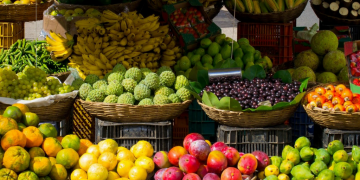Inflation rate in Kenya as measured by the Consumer Price Index (CPI), increased marginally to 6.8% in September 2023 compared to 6.7% in August 2023, on account of sharp increases in fuel prices.
A litre of petrol increased to KSh 212.25 per litre in September from KSh 195.32 in August, an increase of 8.7% while a litre of paraffin increased to KSh 203.34 per litre from KSh 170.25 in August, an increase of 19.4%. The price of a litre of diesel increased from KSh 180.42 per litre in August to KSh 201.73 in September 2023, an increase of 11.8%.
According to inflation figures from the Kenya National Bureau of Statistics (KNBS), virtually all sectors recorded a general increase in prices after a slowdown witnessed in August 2023.
On the list of items that drove inflation in September includes increases in prices of potatoes, cabbages and sukuma wiki which increased by 18.4%, 7.4% and 4.2%, respectively.
During the same period, however, inflation was slowed by prices of maize flour, which occupies the main dish for many households, which fell by between 3.6% and 6.7% for various brands and grains, during the month of September.
While the price of a 13kg cooking gas increased slightly from KSh 2709.07 in August to KSh 2795.69 in September, an increase of 3.2%, this price level is a climb down of 10% compared to cooking gas prices prevailing in September 2022.
There was an increase in the prices of kerosene by 19.4% during the review period. However, prices of electricity of 200 kWh and 50 kWh dropped by 2.1% and 2.5%, respectively, between August 2023 and September 2023.
The Transport Index went up by 3.5% between August 2023 and September 2023. The increase was mainly driven by rise in prices of petrol and diesel by 8.7% and 11.8%, respectively.
The cost of transport, food, non-alcoholic beverages; housing, water and electricity; as well as gas and other fuels, increased by 13.0%, 7.9% and 6.3%, respectively, between September 2022 and September 2023.
These three divisions account for more than half of the goods and services consumed by Kenyan households.
The CPI and inflation is generated from data collected through monthly surveys of retail prices that target a representative basket of household consumption goods and services.
The data collection is conducted in the second and third weeks of the month from a sample of outlets located in 50 data collection zones across the country.
ALSO READ: Higher Food & Transport Costs Drive Inflation to 9.2% in February




